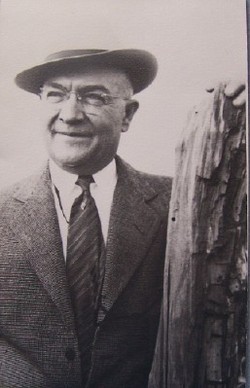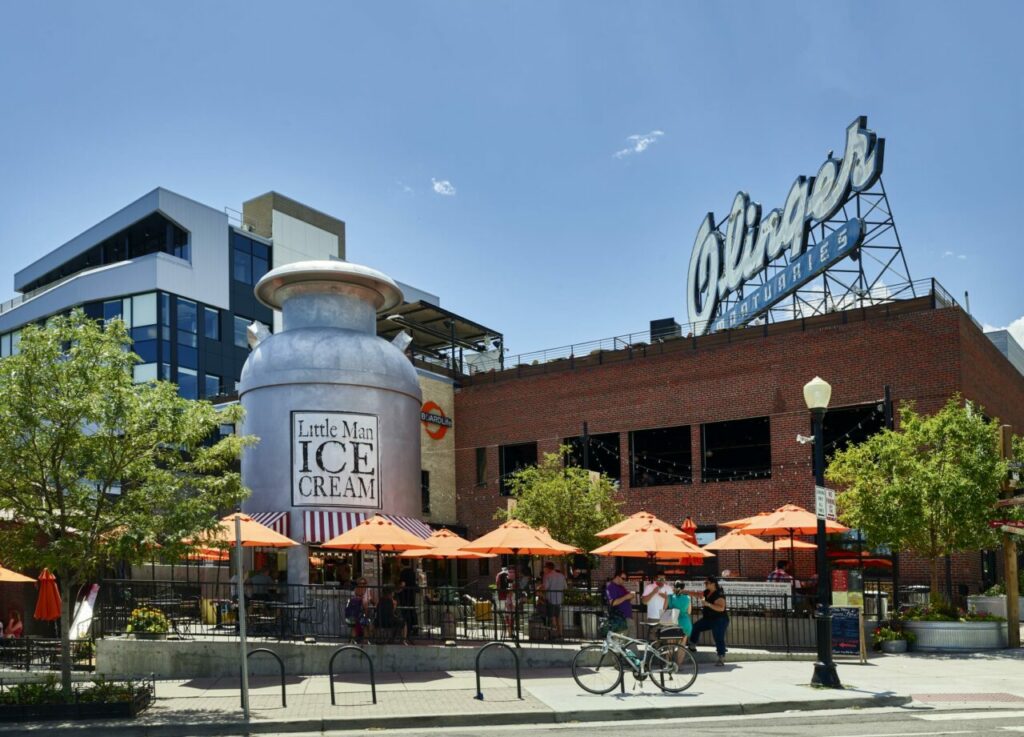By Rebecca A. Hunt, Ph.D.
Occasionally, writers get something wrong. In my October 2023 column I mistakenly gave credit for assisting Mother Cabrini to the wrong man. Instead of Michael Notary, it should have been Frank Damascio. And the house that I said belonged to Michael Notary was the Frank Damascio house, which was the home used by Mother Cabrini. I want to thank Father Blaine Burkey, the archivist for the Capuchin Brothers in North Denver, and my friend and fellow historian Phil Goodstein for catching my error.
This month I am going to tell a story about how one man’s dream had an enormous impact on generations of Denver boys. And about how a building can have many meanings when adapted and reused.
In 1890, John and Emma Olinger, with their son George, opened their first mortuary at Fifteenth and Platte Streets in Denver. In 1908, at 2600 Sixteenth Place, they built what the Colorado Funeral Directors Association called “the first building built as a mortuary in the Rocky Mountain Region.” The lower building at Boulder Street and Sixteenth housed the offices, the viewing rooms and chapel. The upper building was the crematorium and the embalming rooms. This was the finest mortuary in Denver, with a broad range of services. When he died in 1917, Buffalo Bill Cody’s body was reared for his final repose on Lookout Mountain.
By the 1930s, after 40 years of service, George retired and turned operations over to his daughter Gwendolyn Van Derbur, her husband, Francis, and their partner Joseph Bona. Over time, the new owners bought out many rival undertaking firms as well as developing their own cemeteries along the Front Range. Later they sold out to S.C.I. of Houston, Texas.
Running a mortuary was not George Olinger’s only passion. In the 1910s, he had an idea. He organized a baseball team in the Highlands neighborhood with the idea that he could use it as a way of introducing boys to principles and ethics that would turn out good and productive men. In 1916, he named the group the Highlander Boys. This referred back to the Highland identity of the neighborhood. Soon he introduced military-style uniforms paid for by his business.

Youths joined when they were 9 years old, and through their later childhood and adolescence learned to be patriotic and to have good spiritual and ethical underpinnings. Olinger emphasized physical activity as an essential part of the program. Overall, the organization used a military structure as a way of instilling skills and good qualities in the youth. They had military drill, but also a band.
In 1916, after George recruited the first 50 Highlander Boys, he created a nonprofit and moved the organization to the area of Fourth and Speer in central Denver. They built their first building there. But in the 1920s they found that they had difficulty recruiting because of the Great Depression, and the group shut down in 1933.
Another man, Rev. David Bayless, restarted the Highlanders in 1936. They built a clubhouse at 300 Logan St. (site of the current Channel 9 building). By 1938 there were 12,000 boys involved in the group’s activities. Olinger served on the board until his death.
A New Era
Beginning in the 1960s, the Highlanders struggled to find their way in an evolving world. It faced arguments that it was militarist, sexist and elitist. It went co-ed and recruited heavily in ethnic neighborhoods. By 1976, when the organization shut its doors, it had served more than 100,000 boys (and girls) in the metro area through music, military and sports activities. George Olinger’s good idea helped create multiple generations of good citizens.
In the 1990s, the former mortuary buildings in Lower Highland moved into the next stage of their existence. Denver developers Paul Tamburello and Stephanie Garcia purchased the Olinger buildings to create a restaurant district on the northwest side. Lola and Vita were two of the eateries in the Olinger building. Tamburello also built Little Man Ice Cream in the yard between the upper and lower buildings. Eventually the upper building housed a restaurant called Linger, using the old Olinger roof sign (without the O) to mark the eatery’s location. The remainder of the building now houses trendy shops. Tamburello has turned the plaza between the upper and lower buildings into a public space that hosts live music and family oriented events. The place formerly focused on the end of life has become a center for community gatherings.

For more information on George Olinger and the Highlanders go to the Highlander Boys website at http://highlanderboys.org/index.htm.
Dr. Rebecca A. Hunt has been a resident of North Denver since 1993. She worked in museums and then taught museum studies and Colorado, Denver, women’s and immigration history at the University of Colorado Denver until she retired in 2020.

Hello Dr. Rebecca A. Hunt,
My name is Paul Marquez – 2nd Vice President of Wild West History Association (wildwesthistory.org)
My large historical group of 520+ worldwide has most interests in the Wild West.
With 4 published factual and scholarly journals per year, we discover and highlight untold stories of characters of the Wild West at the same time making associative connections with other History groups. In my own family, my ancestors coming from various parts of New Mexico to Firestone, CO and eventually Denver leaving behind an incredible and well-known story in NM being associated with the notorious young outlaw, William H. Bonney, aka Billy the Kid. Also, their family connection to sheriff Patrick Floyd Garrett who killed the outlaw Billy the Kid in Ft. Sumner, NM July 14, 1881. The story has yet to be released in Denver, so I am reaching out to you for guidance.
Thank you